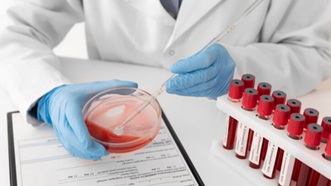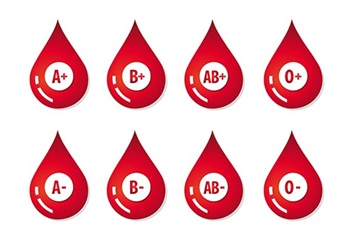Why in news ?
- A new blood group of the world was discovered in a 38-year-old woman of Kolar district of Karnataka, which was named 'CRIB'. This is being considered a historic achievement in hematology.

Key points:
- In the name 'CRIB', 'CR' means Cromer (an existing blood group system) and 'IB' means India-Bangalore, where this discovery began. This new antigen is part of the Cromer blood group system.
- Despite the woman's blood being O Rh+, it was not matching with any normal O+ blood. Advanced serological techniques showed that it was "panreactive" i.e. incompatible with all normal blood.
- Samples of the woman and family members were sent to IBGRL (International Blood Group Reference Laboratory), Bristol, UK. After 10 months of molecular analysis, this new antigen was confirmed.
- The discovery was officially announced at the 35th Regional Congress of the International Society of Blood Transfusion (ISBT) held in Milan, Italy in June 2025.
- Following this discovery, Rotary Bangalore TTK Blood Centre has launched a “Rare Donor Registry” in collaboration with Karnataka State Blood Transfusion Council and ICMR’s Indian Institute of Immunohematology (IIH), Mumbai.
- This initiative is to provide timely and correct blood to patients with rare blood groups.
Blood Group System:
ABO System - Discovered by Karl Landsteiner in the year 1900.

|
Blood Group
|
Antigen
|
Antibody
|
Can Donate To
|
Can Receive From
|
|
A
|
A
|
Anti-B
|
A, AB
|
A, O
|
|
B
|
B
|
Anti-A
|
B, AB
|
B, O
|
|
AB
|
A, B
|
None
|
AB
|
A, B, AB, O
|
|
O
|
None
|
Anti-A, Anti-B
|
A, B, AB, O
|
O
|
- O group = Universal Donor
- AB group = Universal Recipient
Rh System (Rh Factor):
- It was discovered in 1940 by Karl Landsteiner and Alexander Wiener.
- It is named after the "Rhesus monkey" in which this factor was first discovered.
- Based on the presence or absence of Rh antigen:
- Rh+ (positive): Rh antigen present
- Rh– (negative): Rh antigen absent

|
Blood Group
|
Antigen
|
Antibody
|
Rh Factor
|
Can Donate To
|
Can Receive From
|
|
A⁺
|
A, Rh
|
Anti-B
|
Rh⁺
|
A⁺, AB⁺
|
A⁺, A⁻, O⁺, O⁻
|
|
A⁻
|
A
|
Anti-B, Anti-Rh
|
Rh⁻
|
A⁺, A⁻, AB⁺, AB⁻
|
A⁻, O⁻
|
|
B⁺
|
B, Rh
|
Anti-A
|
Rh⁺
|
B⁺, AB⁺
|
B⁺, B⁻, O⁺, O⁻
|
|
B⁻
|
B
|
Anti-A, Anti-Rh
|
Rh⁻
|
B⁺, B⁻, AB⁺, AB⁻
|
B⁻, O⁻
|
|
AB⁺
|
A, B, Rh
|
None
|
Rh⁺
|
AB⁺ (only)
|
All (Universal recipient)
|
|
AB⁻
|
A, B
|
Anti-Rh
|
Rh⁻
|
AB⁺, AB⁻
|
A⁻, B⁻, AB⁻, O⁻
|
|
O⁺
|
Rh
|
Anti-A, Anti-B
|
Rh⁺
|
A⁺, B⁺, AB⁺, O⁺
|
O⁺, O⁻
|
|
O⁻
|
None
|
Anti-A, Anti-B, Anti-Rh
|
Rh⁻
|
All (Universal donor)
|
O⁻ (only)
|
Important information:
- pH of blood = 7.35–7.45
- Total blood volume = about 7–8% of body weight (~5–6 liters)
- Site of blood formation = Bone marrow
- Most common cell in blood = RBCs
- Largest blood cell = Monocyte (type of WBC)
- Vitamin required for blood clotting = Vitamin K
|
Q. What is the name given to the new blood group discovered recently in a woman from Karnataka?
(a) IBGRL
(b) CRIB
(c) COMER
(d) INBL
|



